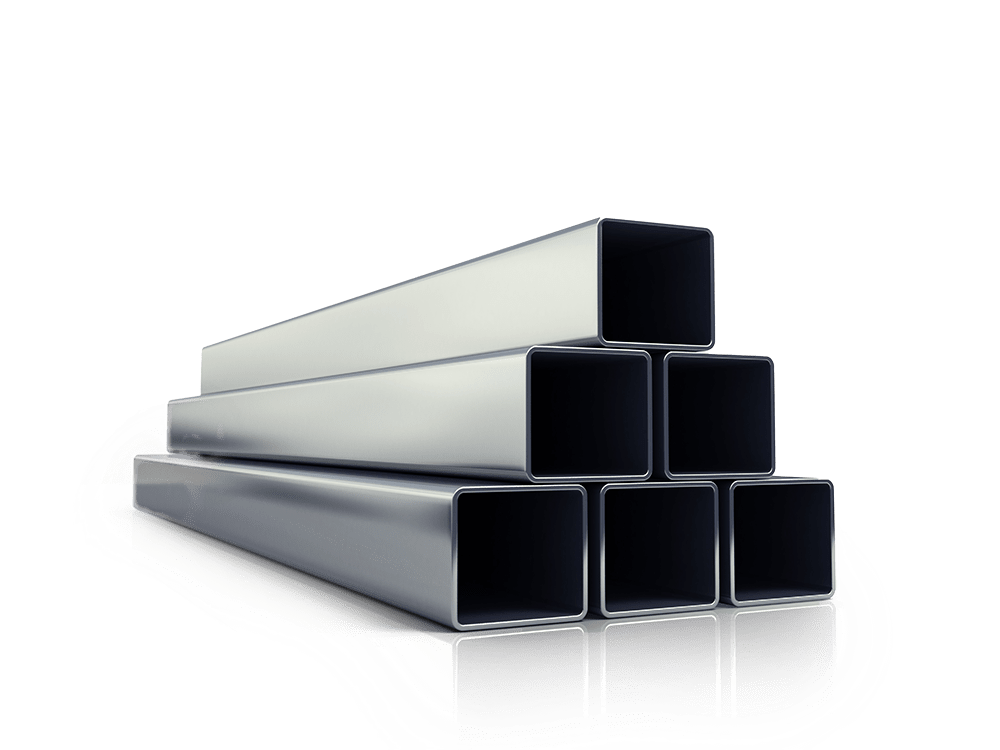Structural steel tubing is hollow-shaped steel used in construction and assemblies, specifically for load-bearing structures. It is available in various cross-sectional forms, including round, square, and rectangular. Structural tubing is designed to offer strength, durability, and stability while supporting heavy loads in building and infrastructure projects.
Welded structural steel tubing is produced by forming and welding flat-rolled coils to create the desired tubular shape. This welding process produces a strong bond, making welded structural steel tubing suitable for columns, beams, braces, and frameworks.
Structural steel tubing is widely used in the construction of buildings, bridges, industrial facilities, and other infrastructure projects. Its versatility allows architects and engineers to create innovative designs that efficiently distribute loads and provide support. Moreover, the hollow nature of the tubing enables the passage of utilities, making it a preferred choice for many construction applications.
Structural steel tubing is appreciated for its strength and durability, ease of fabrication, and various connection methods such as welding, bolting, or fastening. Additionally, using steel in construction projects is environmentally sustainable due to its recyclability.
Overall, structural steel tubing is crucial in modern construction and engineering. It provides a reliable and efficient alternative for constructing robust load-bearing structures across various industries.
- Strength - Structural steel tubing exhibits an exceptional strength-to-weight ratio, which empowers it to withstand substantial loads while simultaneously diminishing the total weight of the structure.
- Uniformity - HSS plays a critical role in OEM applications by guaranteeing uniformity in size, shape, and tolerances, ultimately leading to reliable and expected usage.
- Ease of Fabrication - HSS can be readily bent, formed, punched, and drilled.
- Durability - Steel is undoubtedly one of the most durable and resilient materials. Its exceptional resistance to wear, decay, and pests makes it an ideal choice for building long-lasting structures.
- Safety - The non-combustibility of steel makes it a safer material to use in construction, as it does not ignite or spread flames. A steel structure is also more resistant to natural disasters such as earthquakes and hurricanes.
| Agriculture | Automotive and Transportation | Construction | Material Handling |
|
|
|
|
ASTM A500 is a standard specification for cold-formed welded and seamless carbon steel structural tubing.
ASTM A500 covers several grades of carbon steel tubing, including Grade A, Grade B, Grade C, and Grade D. Each grade has different mechanical properties and is suitable for various structural applications. The tubing may be produced in round, square, rectangular, or unique shapes.
The ASTM A500 specification outlines the chemical composition, tensile strength, yield strength, elongation, and other mechanical properties required for each grade of carbon steel tubing. It also includes requirements for testing, dimensions, and tolerances.
The primary applications of ASTM A500 tubing are in construction, infrastructure, and general structural purposes, where the tubing is used for supporting columns, beams, trusses, and other load-bearing structures.
Painting, galvanizing, and pickling techniques can protect structural steel from corrosion.
Mechanical tubing is used for a variety of purposes and can be manufactured using different substrate types and grades to match requirements.
Alliance Tubular Products manufactures our mechanical tubing to specification ASTM A-513.
Here are some key characteristics and benefits of Mechanical Tubing.
- Precision Tolerances: Mechanical tubing is manufactured to precise tolerances. Its consistent dimensions enable seamless integration into a wide range of precision-driven applications.
- Versatile Applications: Mechanical tubing serves various industries, such as automotive, aerospace, construction, agriculture, industrial equipment, and machinery. It is popular for producing essential components like component parts, shafts, axles, cylinders, and other mechanical elements.
- Strength and Durability: The strength and durability of mechanical tubing make it the preferred choice for applications that require light to medium loads.
- Fabrication: The uniformity and consistent dimensions of mechanical tubing greatly facilitate punching, bending, and welding, resulting in more efficient manufacturing.
- Corrosion Resistance: Painting, galvanizing, and pickling techniques can protect mechanical tubes from corrosion.
ASTM A513 is a standard electric-resistance-welded (ERW) carbon and alloy steel mechanical tubing specification. This specification covers round, square, rectangular, and special-shaped tubing suitable for various mechanical applications, such as machinery, automotive parts, construction equipment, and other structural applications.
ASTM A513 mechanical tubing must adhere to specific requirements to ensure its quality and suitability for mechanical use. Some of the essential requirements outlined in the specification include:
- Chemical Composition: The steel grade substrate used in the tubing will meet specific chemical composition limits, ensuring the appropriate balance of elements to impart the desired mechanical properties.
- Tensile Strength and Yield Strength: The tubing should have specified minimum tensile and yield strengths, indicating its ability to withstand applied forces without failure.
- Wall Thickness and Outside Diameter Tolerances: The tubing's dimensions, particularly its wall thickness and outside diameter, must meet specific tolerances to ensure uniformity and proper fit in applications.
- Surface Finish: The tubing should have a smooth, clean surface finish, free from defects that could compromise its end use.
It's worth noting that ASTM A513 tubing is available in various grades, such as 1008, 1010, 1015, 1020, 1025, 1030, 4130, and 4140. Each grade has its specific chemical composition and mechanical properties. Manufacturers and engineers may select the appropriate grade based on the intended application and the required mechanical characteristics.
| Agriculture | Automotive and Transportation | Construction | Material Handling |
|
|
|
|
What Can We Do For You?
Do you have any questions regarding quotes, materials, services, quality, supply chain solutions, and logistics? Creating custom supply chain solutions tailored to your specific needs and business is at the core of Alliance Tubular Products. Contact us today, and let's get started together.

